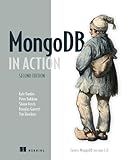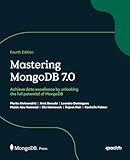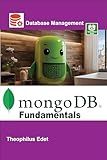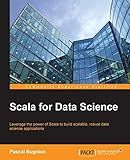Best MongoDB Aggregation Tools to Buy in December 2025

MongoDB in Action: Covers MongoDB version 3.0



Mastering MongoDB 7.0: Achieve data excellence by unlocking the full potential of MongoDB



MongoDB Fundamentals (Mastering Database Management Series)



The Practical MongoDB Handbook: Building Efficient NoSQL Databases



Learn NextJS 15, Typescript, MongoDB and Tailwind CSS: By Building a Minimalistic E-commerce store



Scala for Data Science: Leverage the power of Scala with different tools to build scalable, robust data science applications



BIG DATA ANALYTICS : CONCEPTS, TECHNIQUES, TOOLS AND TECHNOLOGIES



Tips for advanced business analytics and data insights in Python - An analysis tool for data-driven decision making that combines Pandas and Power BI - (Japanese Edition)


In MongoDB, you can combine or aggregate column lists using the $project operator in the aggregation pipeline. This operator allows you to reshape documents by including, excluding, or adding new fields based on existing fields.
To combine column lists in MongoDB, you can use the $project operator with the $concat operator to concatenate multiple fields together. For example, if you have fields "firstName" and "lastName" in your documents, you can combine them into a single field "fullName" using the following aggregation query:
db.collection.aggregate([ { $project: { _id: 0, fullName: { $concat: ["$firstName", " ", "$lastName"] } } } ])
This query will create a new field called "fullName" in the output documents, which combines the values of "firstName" and "lastName" separated by a space. You can also perform other operations like string manipulation, date formatting, or math calculations using the $project operator to aggregate column lists in MongoDB.
How to concatenate column values with a separator in MongoDB?
In MongoDB, you can concatenate column values with a separator using the aggregation framework and the $concat operator. Here's an example query that concatenates the values of two columns (column1 and column2) in a collection with a comma separator:
db.collection.aggregate([ { $project: { concatenatedColumns: { $concat: ["$column1", ", ", "$column2"] } } } ])
In this query, the $project stage is used to create a new field called concatenatedColumns that contains the concatenated values of column1 and column2. The $concat operator is used to concatenate the values with a comma separator.
You can customize the separator by changing the value in the $concat array. You can also concatenate more than two columns by adding additional column values to the array.
Make sure to replace collection, column1, and column2 with the actual names of your collection and columns.
How to merge multiple columns in MongoDB?
In MongoDB, you can merge multiple columns using the $concat aggregation operator. Here is an example of how to merge two columns "firstName" and "lastName" into a new column "fullName":
db.collection.aggregate([ { $project: { fullName: { $concat: ["$firstName", " ", "$lastName"] } } } ]);
This will create a new column "fullName" for each document in the collection, concatenating the values of "firstName" and "lastName" with a space in between.
You can also include additional text or variables in the concat array to customize the merged column further.
What is the method for combining columns into an array in MongoDB?
In MongoDB, you can combine columns into an array using the $project stage in the aggregation pipeline. Here's an example of how you can combine multiple columns into an array:
db.collection.aggregate([ { $project: { combinedArray: { $concatArrays: ["$column1", "$column2"] } } } ])
In this example, "$column1" and "$column2" represent the columns that you want to combine into an array. The $concatArrays operator concatenates the values from the specified columns into a single array under the field name "combinedArray".
You can also include additional columns or exclude columns by specifying them in the $project stage.
What is the impact of aggregating columns on performance in MongoDB?
Aggregating columns in MongoDB can have an impact on performance, as it involves processing and analyzing large amounts of data. When aggregating columns, MongoDB must read and manipulate data from multiple columns and documents, which can put a strain on system resources and slow down query performance.
Some factors that can affect performance when aggregating columns in MongoDB include:
- Data volume: The amount of data being aggregated can greatly impact performance. Larger datasets will take longer to process and aggregate, leading to slower query performance.
- Indexing: Proper indexing can help improve performance when aggregating columns in MongoDB. Ensuring that the columns being aggregated are indexed can help speed up the query process.
- Query complexity: The complexity of the aggregation query can also impact performance. More complex aggregations may require more computational resources and take longer to execute.
- Hardware resources: The available hardware resources, such as CPU, memory, and storage, can also affect performance when aggregating columns in MongoDB. Insufficient resources can lead to slower query performance.
In general, it is important to carefully consider the impact of aggregating columns on performance in MongoDB and optimize queries and indexes to improve efficiency. Regular monitoring and tuning of the MongoDB database can also help maintain optimal performance when aggregating columns.
